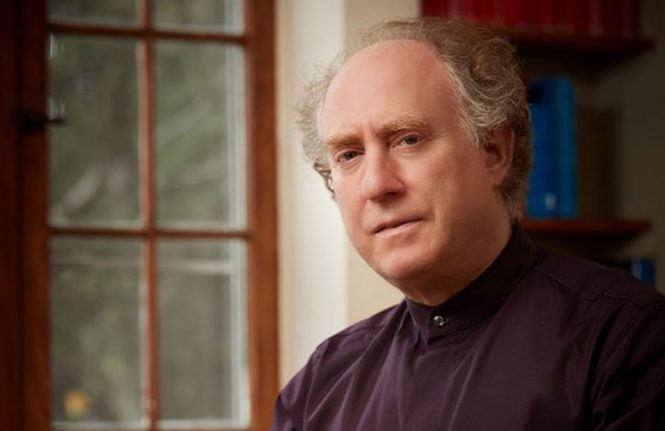The Portland Symphony Orchestra appears to have shaken itself back to life for the third program of its classical series. Having played a diffuse opening concert with Jeffrey Kahane on the podium, and a somnambulant follow-up conducted by Bruce Hangen, the orchestra sounded solid and focused Tuesday evening, when Kahane returned to lead works by Mozart and Shostakovich at Merrill Auditorium.
In his earlier appearance, Kahane confined himself to conducting, even though he had built his career as a pianist before he took up the baton in 1988. He had a strong reputation as a Bach, Mozart and Beethoven interpreter, with an insightful approach to new music as well. On Tuesday, he opened the concert with Mozart’s Concerto No. 17 in G major for Piano and Orchestra (K. 453), which he conducted from the keyboard.
Kahane adopted the stage layout that historians have deduced from paintings as that of Mozart’s time – that is, instead of the modern style of having the keyboard positioned horizontally, with the player facing the podium, the piano is placed pointing into the orchestra, so that the piano is surrounded by the strings and the player’s back is to the audience.
Many pianists who also conduct use the standard modern configuration when leading from the keyboard. But the 18th century layout makes more sense: Instead of having to twist sideways to face the orchestra while conducting, Kahane was already in position.
It also means removing the piano lid, which would prevent him from seeing (and being seen by) the violinists. In theory, removing the lid means abandoning a large, reflective surface that, in a modern layout, pushes the sound out to the audience. But on Tuesday, it was a good thing: Merrill’s often murky-sounding piano had a bright, crystalline sound, for once.
That clarity was largely attributable to Kahane, whose account of the opening movement’s playful solo line was crisply articulated and thoughtfully ornamented. Before the piano’s entrance, Kahane set the stage by drawing a similar approach to the string lines, which had a detached, if not exactly staccato, quality. That seemed slightly extreme at first, but it made complete sense once the piano began.
This is, of course, a concerto with many facets and a broad emotional underpinning. The central Andante is strikingly darker; it bears both a spiritual and musical kinship to the Countesses arias – particularly “Dove Sono” – in “The Marriage of Figaro.” Both Kahane and the orchestra tapped into that melancholy quality beautifully, and then countered it in the rambunctious finale, which was so vivid that you could forgive a couple of instances where Kahane seemed to rush ahead of the ensemble.
Kahane devoted the second half of the program to Shostakovich’s Symhony No. 10 in E minor (Op. 93), a work that Shostakovich composed shortly after the death of his nemesis, Joseph Stalin. As Kahane noted in comments just before the performance, Shostakovich intended the piece to be both a memorial to the millions killed by Stalin, and as a personal victory lap for having outlived him. Indeed, it’s hard not to hear the repeated, vigorous D, E-flat, C, B motto – Shostakovich’s signature (DSCH, using the German system of note naming) – as the equivalent of dancing on Stalin’s grave.
Kahane also said that the work means more to him than any other 20th century score, an assertion he personalized by noting that this past weekend was the 80th anniversary of Kristallnacht – the moment when the Nazis’ persecution of Jews shifted from discrimination to open violence – and likening his own family’s travails during the Holocaust to the terror that Shostakovich and other Russians felt under Stalin.
The result was an intense, emotional performance that got to the heart of Shostakovich’s score. Kahane drew remarkably tight, often wrenching playing from the orchestra in the mournful first movement and the slow introduction to the finale, as well as thoroughly gripping accounts of the second movement, a pointedly bitter portrait of Stalin, and the grave-stomping finale.
There was much to admire in the orchestra’s playing throughout the evening. The strings recaptured the warmth that characterized their sound last season, but more importantly, they demonstrated the expressive range of that sound in these two vastly different scores. The winds, too, made enlivening contributions in both works, and in the Shostakovich, the brasses (apart from a brief altercation between the horns and the score, near the end of the opening movement) and percussion provided exactly the right heft and power.
Allan Kozinn is a former music critic and culture writer for The New York Times who lives in Portland. He can be contacted at:
allankozinn@gmail.com
Twitter: kozinn
Send questions/comments to the editors.



Comments are no longer available on this story